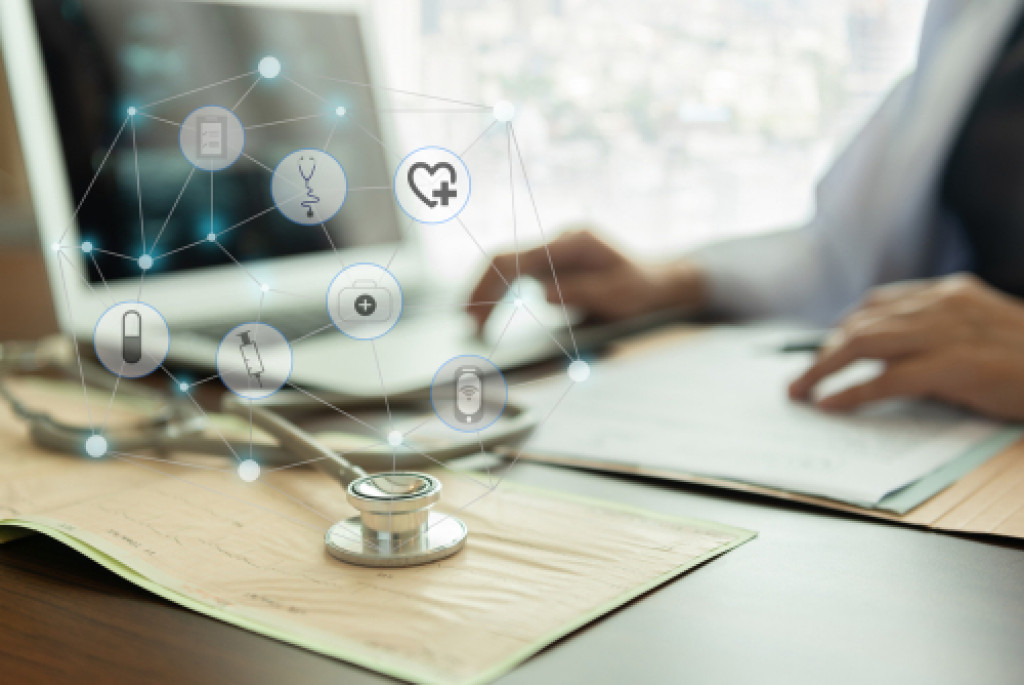- Use of technology is enhancing the quality of patient care.
- Advanced imaging technologies and telemedicine allow for more accurate diagnosis and treatment.
- Improved efficiency leads to cost savings for patients and healthcare providers.
- It increased patient engagement through access to health information and applications.
- Provision of remote healthcare services using medical drones, telehealth, and 3D Printing.
The use of technology is transforming the healthcare industry, and it’s not just about fancy gadgets and devices. Instead, it’s about enhancing patient care and services using innovative technologies. Gone are the days when healthcare professionals had to rely on manual processes and paperwork to evaluate patients’ health, diagnose diseases, and prescribe treatments.
Today, the healthcare industry has access to advanced technologies that aid in making more accurate and informed decisions about patient care. Here are the various advantages of utilizing technology in healthcare.
Enhanced Patient Care
One significant advantage of technology in healthcare is that it improves the quality of patient care. For example, Electronic Health Records (EHRs) allow healthcare professionals to access patient data easily and quickly. They can also keep track of medications, monitor symptoms, and track vital signs electronically, resulting in better overall patient care.
More Accurate Diagnosis and Treatment
Technology provides healthcare professionals the tools to diagnose and treat various diseases accurately. For instance, advanced imaging technology like X-rays, MRIs, and CT scans are vital in identifying and treating diseases like cancer, heart disease, and other conditions.
Additionally, telemedicine enables doctors to consult with colleagues and other healthcare professionals from across the globe, resulting in more accurate diagnoses and treatment recommendations.
Improved Efficiency and Cost-effectiveness

Technology has improved the efficiency of healthcare operations, which can lead to cost savings for patients and healthcare providers. For instance, electronic prescribing systems have enabled physicians to prescribe medications more efficiently, reducing pharmacy errors and wait times.
On the other hand, functional medicine software made it easier for healthcare professionals to track patient information, manage diagnoses and treatments, and create comprehensive care plans. This improved efficiency also leads to cost savings for patients and healthcare providers.
Increased Patient Engagement
Technology has increased patient engagement in their healthcare by giving them access to vital health information. Applications such as MyChart and other patient portals enable patients to manage their healthcare more effectively by accessing their health records, scheduling appointments, and communicating with their healthcare providers.
Provision of Remote Healthcare Services
Technology has made it possible to provide healthcare services from remote locations. Telemedicine, for instance, allows people in remote areas to consult with healthcare professionals for diagnosis and treatment.
Additionally, the use of robotics technology in surgical procedures has allowed specialists to perform operations remotely, preventing patients from traveling long distances to receive specialized medical care.
Technologies in Healthcare
Various technologies are used in the healthcare industry. Each of them provides specific advantages to healthcare providers, patients, and other stakeholders in the industry. Some of these technologies include:
Electronic Health Records
Electronic Health Records (EHRs) is replacing the traditional paper-based method of record-keeping. EHRs are digitalized patient health records stored and easily accessible by healthcare providers to help make informed decisions more efficiently. EHRs also reduce the risk of accidental misplacements and duplication of tests, offering improved data security.
Medical Drones

Imagine a world where a drone could deliver critical medical supplies within minutes, saving countless lives. In emergencies, such as natural disasters or a pandemic, where it may be difficult for first responders to reach an injured person, medical drones can precisely and quickly deliver crucial supplies, such as medicines, vaccines, and blood.
Telehealth
Telemedicine or telehealth is a technology that’s been around for a while, but it’s taken off in the last few years. It’s a method medical professionals use to diagnose and treat their patients remotely over a video call.
Telehealth is particularly effective in rural areas where patients can’t travel long distances for medical appointments. Patients with mental health conditions have also seen a significant benefit from telehealth.
3D Printing
3D Printing is a cutting-edge technology that brings endless possibilities to the healthcare industry. With 3D Printing, complex medical structures, such as joints, bones, implants, and prosthetics, can be produced faster, cheaper, and more accurately. This technology can revolutionize personalized medicine, as it allows doctors to create models of organs or customize implants to the patient’s unique needs.
Final Thoughts
Technology has revolutionized healthcare services in various ways. From enhancing patient care to increased patient engagement and cost savings, technology’s impact on healthcare cannot be overlooked.
Although it’s essential to note that technology should complement, rather than replace, the expertise of healthcare professionals. Implementing technology in healthcare requires extensive research, constant evaluation, and proper training to improve patient safety and outcomes.

